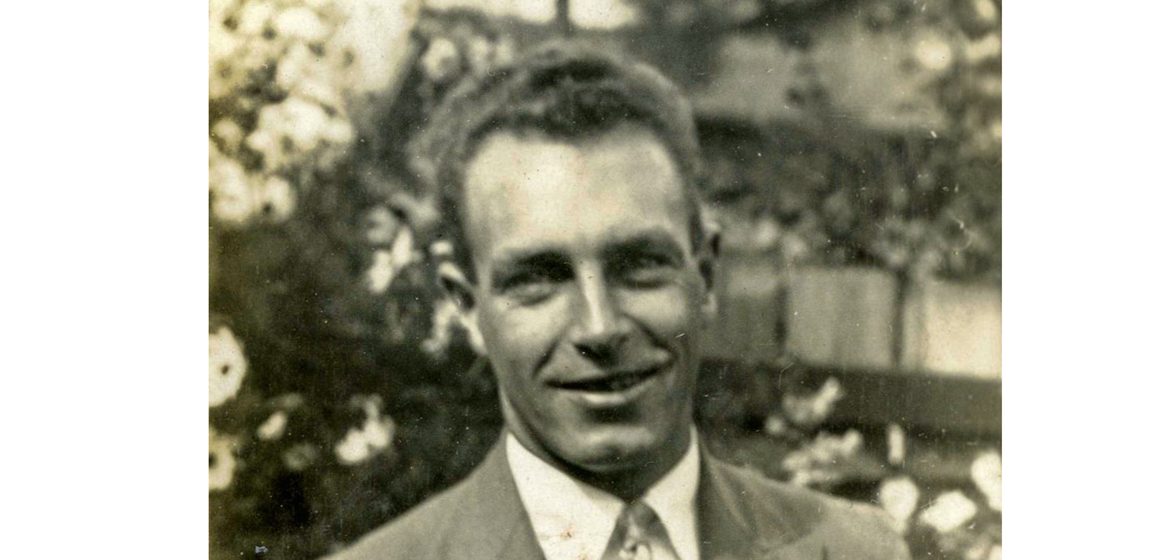

The Couldrey family had a strong presence on the Auckland waterfront from the 1870s. Arnold (Bill) Couldrey became a major figure in New Zealand boatbuilding and design for over 30 years – one of the few that Arch Logan agreed could build his designs. By Harold Kidd.
Bill’s grandfather George Couldrey was born in 1834 in Abingdon in Berkshire, from a Huguenot family.
He went to sea in 1852 at the age of 18. In June 1859 he was awarded the Royal Humane Society’s Medal for rescuing a woman who fell overboard from the ship Copenhagen in the Indian Ocean into shark-infested waters. He was discharged in 1863 as an able seaman.
George married Maria Hyde on 25th May 1863, and three days later they left for Auckland as immigrants in the White Star ship Annie Wilson. After four months at sea they reached Auckland – there had been nine deaths, five of them children with scarlet fever.
The Couldreys proceeded to Clevedon and were surprised to find that not only was the country at war but they were in the front line with the Waikato. The situation on the Wairoa River at Clevedon was extremely critical but, by 1864, an uneasy peace had been established.
George and Maria produced six children: William (Bill) 1865, Louise 1867, Edwin (Ted) 1869, Florence 1870, Herbert Arbon (Bert) 1873 and George 1876.
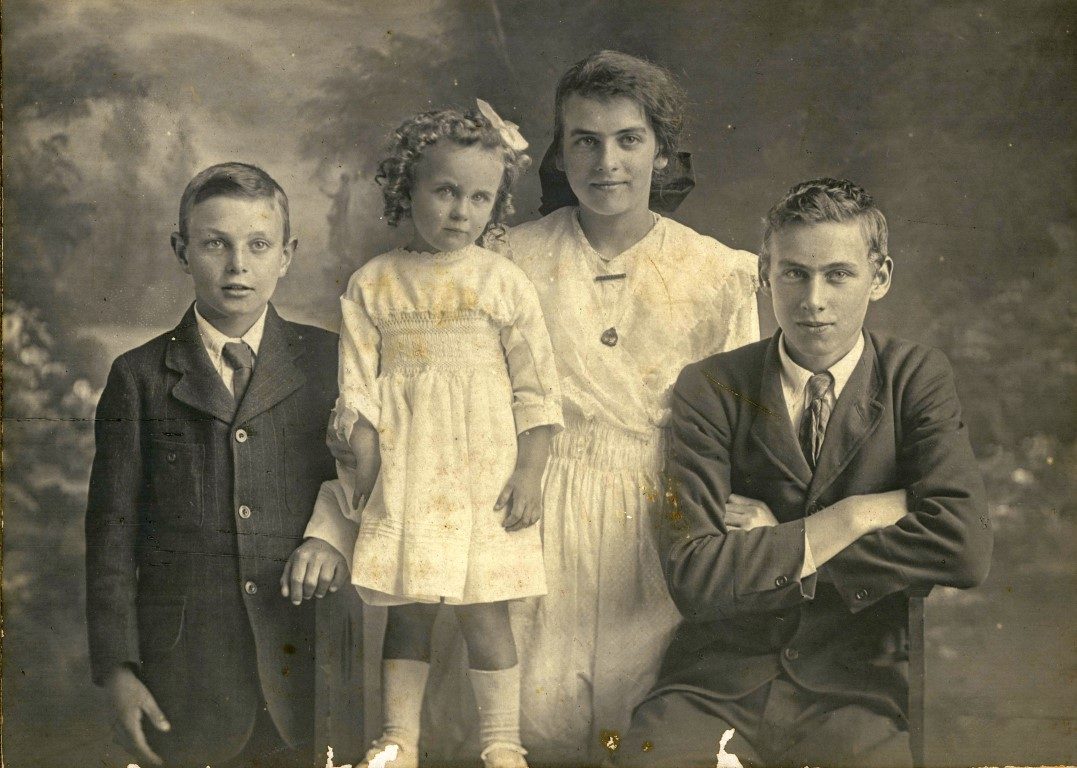
In 1865 George and his brother-in-law Thomas Hyde commissioned the 15-ton cutter Rapid, built in Mechanics Bay by Robert Stone. With George as master they set up a service from Clevedon carrying local farm produce to Auckland and Thames – the latter a booming market because of the thousands of prospectors streaming to the goldfields.
In 1896 a number of settlers at Clevedon (including the Couldreys) set up the Clevedon Steam Navigation Company. They chartered the small steamer Planet but then ordered the steamer Hirere to be built by C. & W. Bailey with engines from Bow McLachlan & Co of Scotland at a total cost of £3,268.
With a draft of just over 5ft and a length of 66ft 4in (with twin screws for more manoeuvrability) she was designed for the shallow conditions of the Wairoa River and its bar. Her maiden voyage was January 1897.
In 1877 George had bought 391 acres of coastal land at Maraetai where the family was raised. All the children had strong connections to seafaring. Son Bill went to sea and was a director of the Clevedon Steam Navigation Company, mate and later master of Hirere.
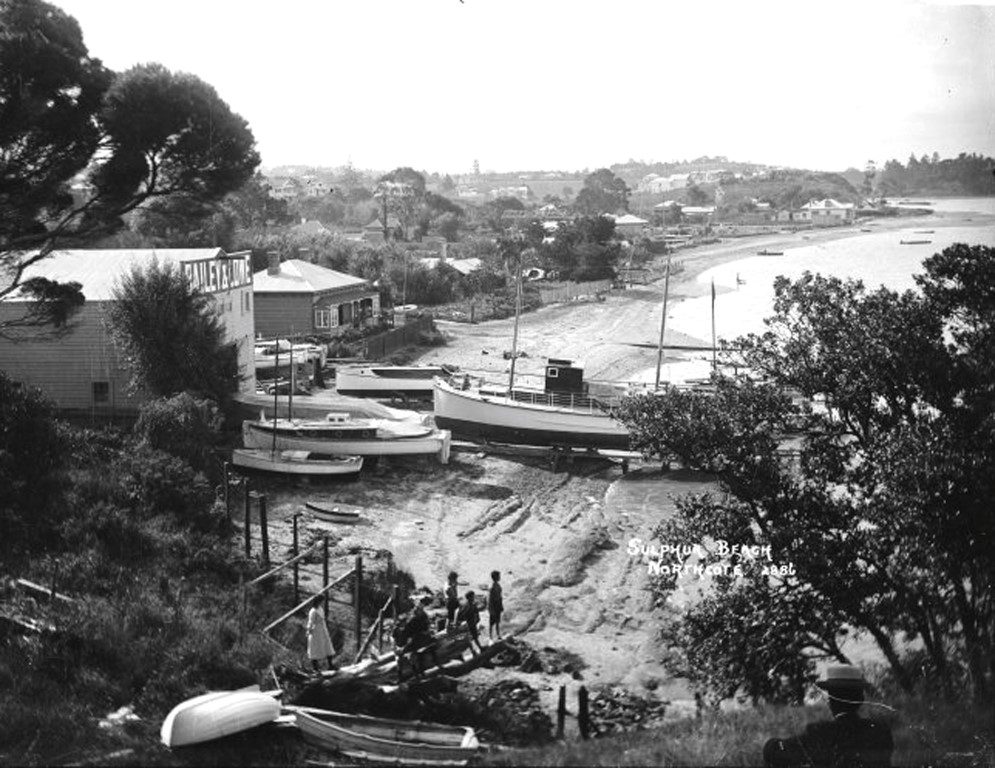
Florence married Hector George who became a part owner with her brothers Bert and George of the 1904 Bailey & Lowe ketch Edna which transported explosives from the Nobels magazine at Maraetai until they sold her to Nobels in 1912.
Son Edwin (Ted) married Frances Granger in 1901. He ran the family shop in Clevedon. His children were Edwin, Nora, Arnold Francis (Bill) and Monobel (a trade name for Nobel Explosives!). From 1908 Ted managed the Nobel Explosives Company’s magazine and its 600-acre Maraetai farm with a salary of £2 per week. The family lived in a corrugated iron house in Magazine Bay opposite the wharf.
Young Arnold was born on 22nd August 1906 at Maraetai Beach. He was soon called Bill after his uncle, whom he resembled closely. Only his mother continued to call him Arnold. He helped milk their 20 cows by hand. He walked to Maraetai School, a half-time school, and rode a horse to the other half-time school at Duders Beach for the rest of the week.

He showed an early interest in boat design, starting by drawing plans in the sand of the beach and building models using his mother’s fabric offcuts as sails. In March 1921, aged 14, he moved to Northcote to board with his uncle, Capt. George Couldrey at 38 Richmond Ave. He started his boatbuilding apprenticeship with Bailey & Lowe at its big shed and yard at the southern end of Sulphur Beach, at the foot of Beach Rd.
By 1912 Walter Bailey and Bill Lowe, trading as Bailey & Lowe, had built 600 boats of all descriptions since 1898 in their yard at Customs St West fronting on to Freeman’s Bay. But the development of Auckland’s waterfront was squeezing them out. They took the bold move to relocate the yard to the southern end of Sulphur Beach, Northcote and keep an office open in the Ferry Buildings.
The shift was completed in January 1913 – a time of brewing industrial unrest around the country. Eventually the Auckland watersiders went on strike in late October 1913. This held up supplies, particularly of marine engines, most of which were US imports.
Then, once the strikes were settled, war broke out in Europe.
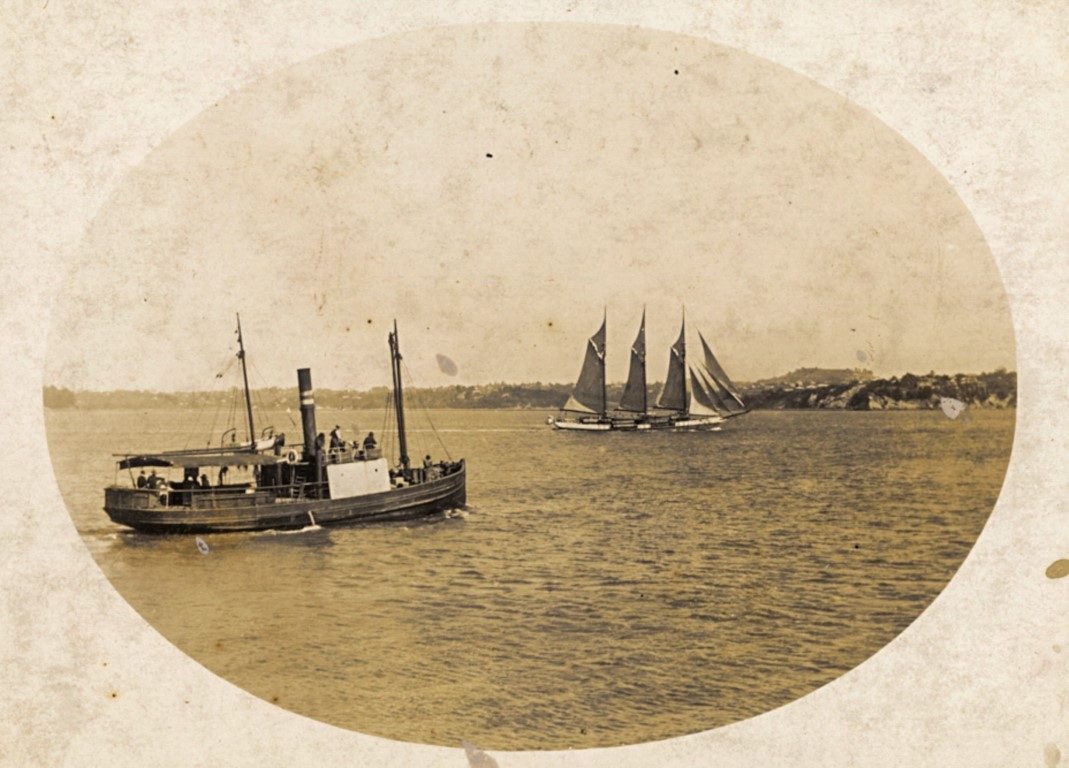
Many boatbuilders and shipwrights joined the Army. By June 1921 Bailey and Lowe had given away the idea that had taken them to Sulphur Beach and realised the extent of issues with logistics of supplies, customers and staff. They shifted to new premises in the Reclamation at Beaumont Street alongside most of their competitors.
Bill had to go to work by ferry. He learned well from the team at Bailey & Lowe. In 1921 he designed and built his first boat, Mighty Atom for J. Brinsden of Northcote, a square-bilged 14-footer in the style of the George Honour 14ft ‘flatties’ that were all the rage in that post-war period among young yachtsmen.
They were one step up from the Bob Brown-designed Takapuna Class (later the Z Class) 12ft 6in cat-rigged flatties making their mark in Shoal Bay as a primary trainer and were as fast as the “14ft One Design” clinker round-bilge dinghies which raced for the Sanders Cup. These had the patronage of the popular Governor General, Lord Jellicoe.
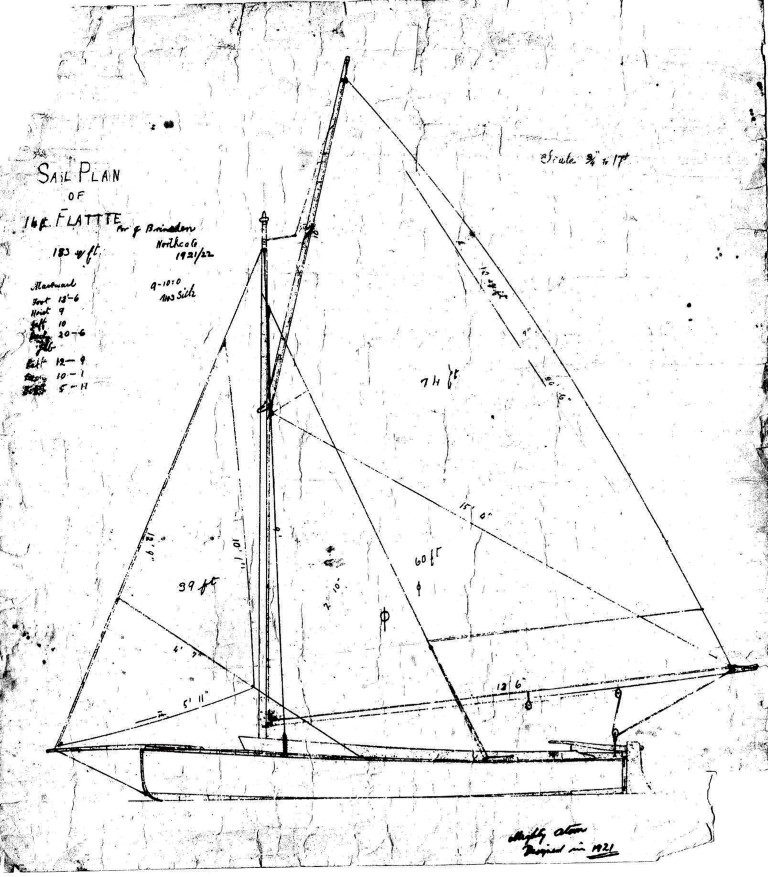
As I showed in last month’s Boating NZ, Bill made friends with returned soldier Ben Mayall of Northcote and helped him build the Arch Logan-designed 18 footers Secret (1922) and Surprise (1924).
His association with Ben Mayall and Secret and Surprise meant that he attracted the attention of Arch Logan. Arch had respect for Walter Bailey whom he preferred to Walter’s brother Charles because of Walter’s hard work ethic and sobriety.
Bill had plenty of opportunities to race yachts in Northcote. He raced the Y Class Sea Sprite well in the 1922/3 season and followed up with a long run of outstanding wins in Surprise from her launch in January 1924 until he sold her in 1931, still on scratch in the V Class.
Bill’s uncle, Capt. George Couldrey, was also involved in three top class yachts. With his brother-in-law Hector George he owned the crack Logan 26ft mullet boat Celox from 1913 to 1919, then the Logan keel yacht Victory from 1919 until his nephew, Bill’s cousin, Harold George bought her outright in 1927. In 1927 he bought the crack 22ft mullet boat Varuna II from ‘Punch’ Windsor and won the 1928 Lipton Cup in a dead heat with Valeria.
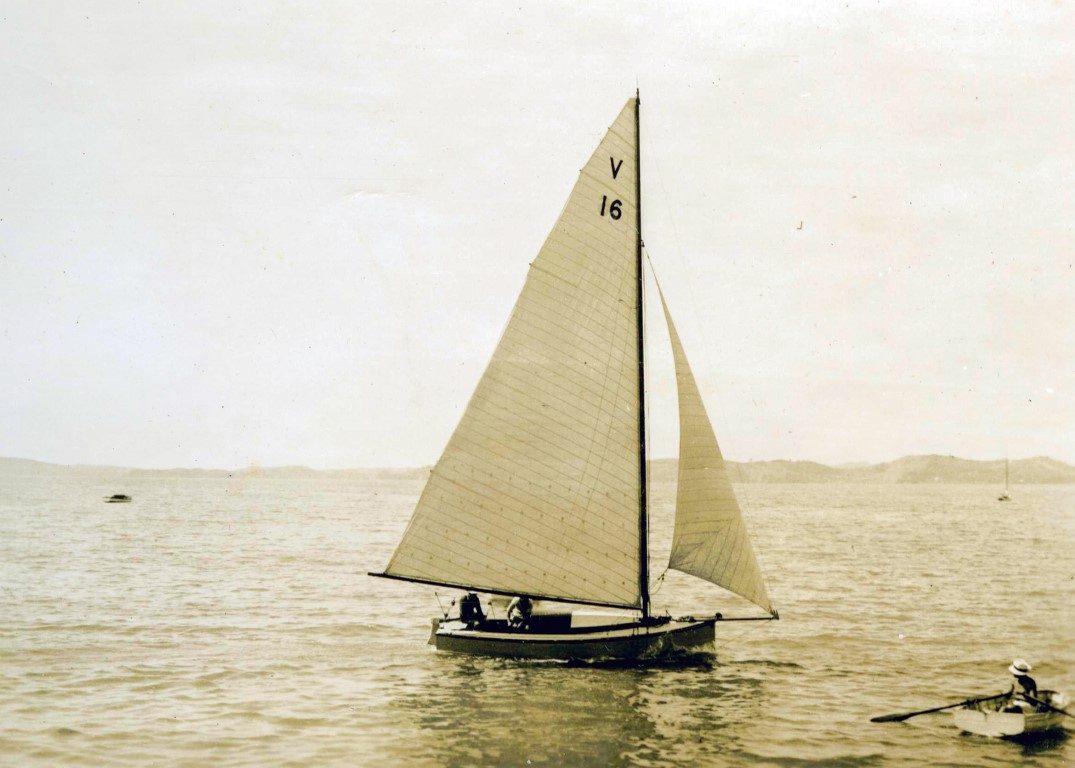
Bill finished his five-year apprenticeship with Bailey & Lowe in April 1926. During that time he designed two more yachts, Kea (another 14ft Y Class square-bilged yacht built by Harry Wilkins in Birkenhead) and, in 1926, Desdemona an 18ft centreboard, raised deck boat built by Ivor Harry ‘Twit’ Larritt in Devonport in the style of Secret, launched in October 1928.
Walter Bailey died in March 1927. Bill stayed some months with the firm, helping Bill Lowe assimilate the business. When he left he gained experience doing odd jobs around the waterfront until 1931 when the Depression really started to bite. These alternative jobs included working for Percy Vos, whose boatbuilding business in Beaumont St was beginning to flourish.
He looked after sugar lighters on the Chelsea slip and did maintenance work on the island trader Maui Pomare. Her hold was insulated for bringing fruit from the islands. On one occasion Bill’s job was to refasten the cork which had spread and blocked the bilge pumps.
This was a 36-hour, non-stop job. In 1931 the master of the Maui Pomare, Bob Bolton, invited Bill to join as ship’s carpenter going to Niue and Western Samoa returning via Niue, Dunedin, Lyttelton and Wellington.
In the next instalment, I will discuss Bill setting up boatbuilding in Bob Brown’s shed on Sulphur Beach, slowly at first, then gaining great momentum as he undertook a series of lop-level keel yacht and prestige launch commissions.




